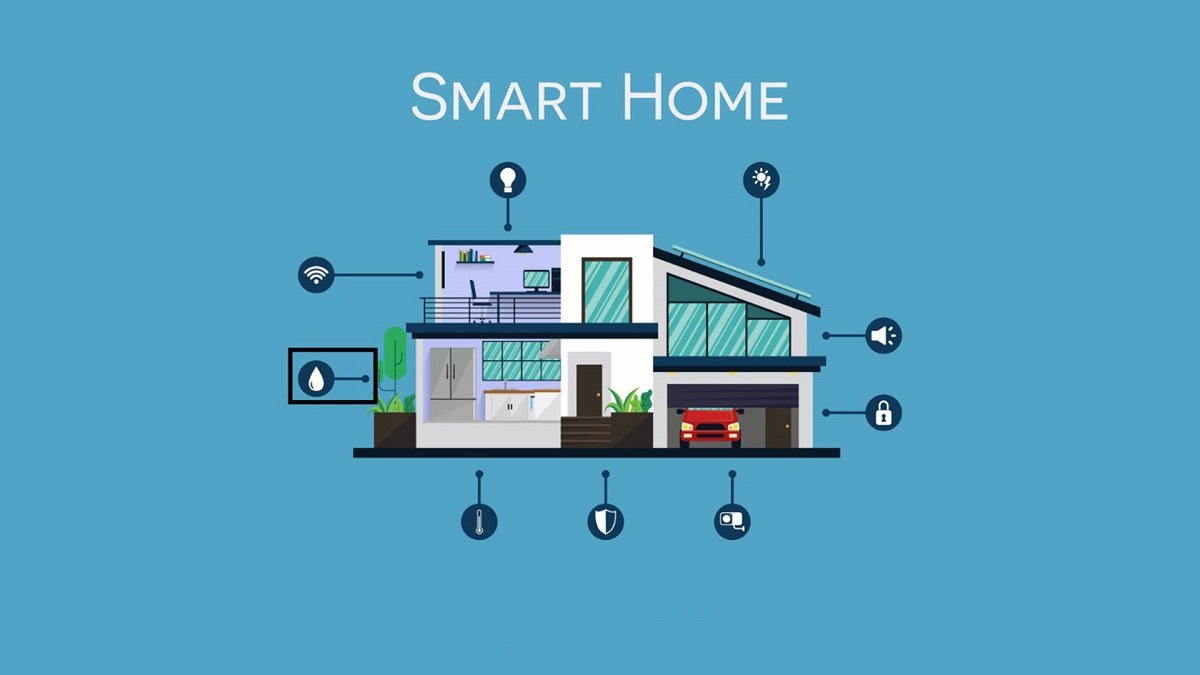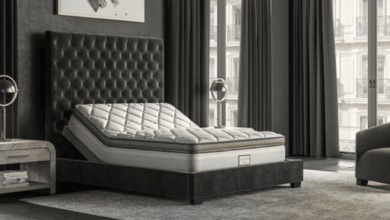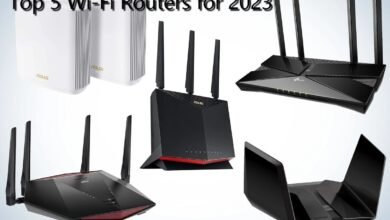The Future is Here: Exploring the Basics of Smart Home Architecture in 2023

The world is evolving rapidly, and so is the concept of the home. The advent of smart home architecture has made it possible to automate various aspects of our lives, making them more comfortable and convenient. In 2023, smart homes will become even more ubiquitous, with more homeowners embracing this technology. In this article, YezzBuzz will delve into the basics of smart home architecture in 2023, exploring the components, benefits, and implementation.
The Definition of Smart Home Architecture
It refers to the design and implementation of automated systems within a home that is controlled through a central network. These systems are designed to enhance the functionality, efficiency, and security of a home by automating various aspects of daily life. It typically involves the integration of various devices, such as sensors, cameras, thermostats, and appliances, which can be controlled through a mobile app or a voice-controlled digital assistant. By using it, homeowners can enjoy increased comfort, convenience, and security, while also reducing energy consumption and enhancing the overall value of their homes.
The Benefits of Smart Home Architecture
There are numerous benefits to implementing smart home architecture in your home. Some of the most significant benefits include:
Increased Comfort and Convenience
These devices allow homeowners to control various aspects of their homes with ease. With the touch of a button or a simple voice command, homeowners can adjust the temperature, turn on lights, and even start their coffee makers. This level of control and automation makes daily life more comfortable and convenient.
Energy Efficiency
It allows homeowners to monitor and control their energy consumption more efficiently. For example, smart thermostats can learn the household’s temperature preferences and adjust accordingly to save energy. Similarly, smart lighting can be programmed to turn off automatically when no one is in the room, reducing energy waste.
Enhanced Security
These security systems provide homeowners with a more comprehensive and automated way to monitor their homes. With motion sensors, cameras, and smart locks, homeowners can keep an eye on their homes from anywhere in the world and receive alerts if there is any suspicious activity.
Improved Health and Safety
It can also improve the health and safety of homeowners. For example, smart smoke detectors can alert homeowners to potential fires, while smart air purifiers can improve indoor air quality, reducing the risk of respiratory problems.
Components of Smart Home Architecture
The smart home architecture comprises several components that work together to create an integrated, automated system. Some of the key components of smart home architecture include:
Sensors
Sensors are an essential component of smart home architecture. They can detect various environmental factors, such as temperature, humidity, motion, and light, and send this data to a central hub.
Central Hub
The central hub is the brains of a smart home architecture system. It receives data from various sensors and devices and controls them based on preset rules and conditions.
Smart Devices
Smart devices, such as thermostats, lighting systems, door locks, and appliances, are integrated into the smart home architecture system. These devices can be controlled remotely through a mobile app or voice-activated digital assistant.
Network
A robust and reliable network is critical for smart home architecture to function correctly. A stable internet connection and secure Wi-Fi network are necessary to connect all devices and sensors to the central hub.
User Interface
The user interface is how homeowners interact with their smart home architecture system. This can be through a mobile app, voice commands, or a control panel mounted on a wall.
Cloud-Based Services
Cloud-based services allow homeowners to access and control their smart home architecture system from anywhere in the world. This includes receiving alerts, monitoring activity, and controlling devices remotely.
By integrating these components, smart home architecture provides homeowners with a seamless and efficient way to control their homes’ various aspects, enhancing comfort, convenience, and security.
Implementation of Smart Home Architecture

It requires careful planning, design, and installation to ensure that all components work together seamlessly. Here are the steps involved in implementing smart home architecture:
Conduct a Home Assessment
The first step is to assess your home’s current infrastructure and identify areas that can be automated. Consider your family’s lifestyle, daily routine, and habits to determine the smart home devices and systems that will be most beneficial.
Define Your Requirements
Based on the assessment, define your requirements for the smart home architecture system. Consider the devices and systems you need, the level of automation you desire, and your budget.
Design the System
Once you have identified your requirements, work with a smart home architect or installer to design the system. They will help you select the appropriate devices, sensors, and central hub, and create a plan for the system’s installation.
Install and Test the System
The installation process involves wiring the devices and sensors to the central hub, configuring the user interface, and testing the system for functionality and performance.
Train and Educate
Once the system is installed and tested, homeowners must be trained on how to use it effectively. Smart home installers or manufacturers typically provide training on how to use the system and troubleshoot common issues.
Monitor and Maintain
It requires regular maintenance and monitoring to ensure optimal performance. Homeowners should regularly check for software updates, replace batteries in sensors and devices, and ensure that the system’s security settings are up to date.
Challenges of Smart Home Architecture
While it offers many benefits, there are also several challenges that homeowners may face when implementing a smart home system. Here are some of the most common challenges:
Compatibility
Not all smart devices and systems are compatible with each other, which can make it challenging to create a cohesive smart home architecture system. Homeowners need to ensure that all devices and systems they select are compatible and can communicate with each other.
Complexity
It can be complex and overwhelming for homeowners, especially if they are not tech-savvy. Homeowners may struggle to navigate the user interface and manage the various components of the system.
Security Risks
These systems are vulnerable to cyberattacks, and hackers can gain access to sensitive information and control over smart devices. Homeowners need to ensure that their system’s security protocols are up to date and take steps to protect their network from cyber threats.
Dependence on Technology
This architecture relies heavily on technology, and a system failure or malfunction can disrupt the entire system. Homeowners may need to troubleshoot and fix technical issues, which can be time-consuming and frustrating.
Cost
Implementing a smart home architecture system can be expensive, and homeowners need to factor in the cost of purchasing and installing smart devices and systems. Homeowners may also need to pay for ongoing maintenance and upgrades.
FAQs
Q: What are the benefits of smart home architecture? A: Smart home architecture provides increased comfort, convenience, energy efficiency, security, and safety for homeowners. It also allows homeowners to control various aspects of their home remotely using a smartphone or other devices.
Q: What components are needed for smart home architecture? A: Smart home architecture requires various components, including smart devices such as thermostats, smart locks, cameras, sensors, and a central hub to connect and control all these devices.
Q: How is smart home architecture implemented? A: Implementing smart home architecture requires careful planning, design, installation, and ongoing maintenance. Homeowners need to assess their home’s current infrastructure, define their requirements, design the system, install and test the system, train and educate themselves and monitor and maintain the system.
Q: What are some challenges of smart home architecture? A: Challenges of smart home architecture include compatibility issues, complexity, security risks, dependence on technology, and cost.
Conclusion
In conclusion, smart home architecture is the future of home automation. In 2023, it will be more prevalent than ever before, offering increased comfort, convenience, and security. The basics include the components, benefits, and implementation of this technology. While there are some challenges associated with smart home architecture, these can be overcome through careful planning and implementation. Whether you are building a new home or upgrading your existing one, smart home architecture is a trend that you should not ignore.












2 Comments